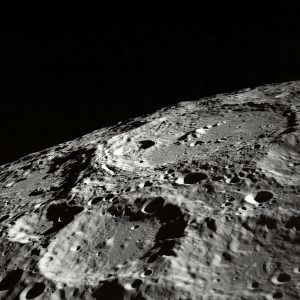Unveiling the Moon’s Exosphere: New Insights into Lunar Atmosphere Formation

The moon, despite being our constant celestial companion, remains a source of many mysteries. For instance, it was only during the Apollo missions of the 1960s and ’70s that we learned it has a very thin atmosphere.
“Many people don’t even know that the moon has an atmosphere,” said Nicole Nie, an assistant professor at MIT’s Department of Earth, Atmospheric and Planetary Sciences, and the lead author of a new study about the moon. “Technically, we call it an exosphere because it’s extremely thin.”
Scientists have long theorized about the sources of this exosphere, which contains helium, argon, neon, ammonia, methane, and carbon dioxide, along with traces of sodium, potassium, and rubidium.
Now, Nie and her co-authors have provided more evidence in a study published in Science Advances that suggests meteorites contribute to the lunar atmosphere.
Previously, scientists believed space weathering—caused by meteorites striking the moon and vaporizing its surface—and ion-sputtering from the solar wind were the main contributors. The solar wind, a stream of particles from the sun traveling at about 1.6 million km/h, impacts the moon’s surface, energizing the atoms in the soil and creating a thin atmosphere.
Some data supporting this theory was collected by NASA’s Lunar Atmosphere and Dust Environment Explorer (LADEE), which orbited the moon from 2013 to 2014. However, Nie and her team wanted to delve deeper, analyzing the moon’s regolith (lunar soil) using samples from the Apollo missions.
The team analyzed 10 samples, totaling only 100 grams, making precision essential. Nie spent three years developing a method to test these samples, which involved crushing them and dissolving the powders in acids. They focused on potassium and rubidium, elements that vaporize easily during both ion-sputtering and meteorite impacts.
Their analysis showed that the regolith contained mostly heavy isotopes of these elements, indicating that vaporization from meteorite impacts, rather than ion-sputtering, was primarily responsible for releasing atoms into the atmosphere. Because the moon is constantly hit by micrometeorites, this thin atmosphere is continuously replenished.
This discovery is significant because ion-sputtering would cause most atoms to escape into space, while meteorite impacts ensure that more of these atoms remain. The study found that 70% of the lunar atmosphere results from meteorite impacts.
Nie is optimistic about the implications for studying samples from other celestial bodies, like the 4.5-billion-year-old asteroid Bennu, whose samples were returned to Earth last September. “I think it provides a framework for future studies,” she said. “We offer a mathematical model that can help analyze samples and understand space weathering processes on different bodies.”
Myriam Lemelin, an associate professor at Université de Sherbrooke’s department of applied geomatics, who was not involved in the study but is involved in several lunar missions, expressed excitement about future analyses in different lunar regions. She noted that while current samples focus on the moon’s equatorial region, upcoming missions will target the south polar region, where space weathering might be less intense. This will allow for comparisons and deeper insights into lunar processes.
Newer Articles
- US Government Sues TikTok Over Alleged Unlawful Collection of Children’s Data
- Maximizing Meta AI: A Guide to Using Facebook’s Chatbot Safely and Effectively
- How to Perform Reverse Image Searches on Desktop and Mobile Devices

